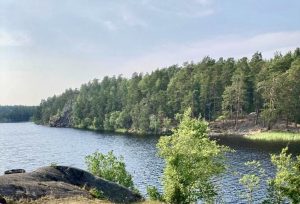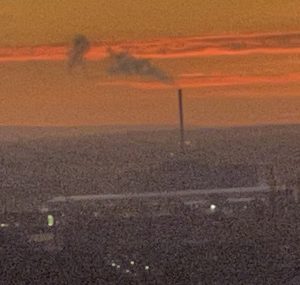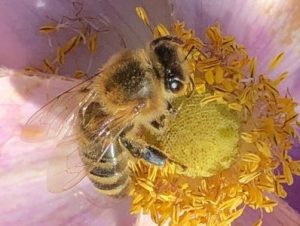Woodlands web updates 11

Hungry caterpillars.
Many insects feed upon the leaves of the canopy in woodlands and forests. They can vary from aphids, leaf miners, sawflies to butterfly and moth caterpillars. Every few years there are significant ‘outbreaks’ of particular moth caterpillars, for example, gypsy moth caterpillars. These caterpillars feed on the leaves of many broadleaved trees but are 'partial' to oaks [and poplars (Populus species)] in woodland / forest situations. When their numbers of high, they can cause significant defoliation.
A study undertaken by researchers at Cambridge has revealed that moth outbreaks can have significant effects on the surrounding ecosystem(s). As the numbers of caterpillars are so high, they eat large amounts of leaf material. This has a number of consequences
- The amount biomass in leaf fall in the autumn is reduced
- The caterpillars convert the carbon-rich leaves into nitrogen-rich frass. The caterpillars are not very good at using the leaf nitrogen for their own ends. Frass is the excrement / faecal material produced by the caterpillars.
- This frass can pass into streams / waterways and end up in lakes and ponds.
- Once in the lakes etc, it changes the chemistry of the water and it favours the reproduction of bacteria that release carbon dioxide. This happens at the expense of the algae, which remove carbon dioxide from the atmosphere.
- The amount of carbon entering streams and lakes is reduced in caterpillar outbreak years.
- Caterpillar outbreaks significantly affect the carbon and nitrogen cycles in woodlands and associated freshwater systems.
Details of the work (which focused on forest and lake systems in Canada) can be accessed here.
Air pollution and wood burning stoves.
 Tiny particles called PM2.5 (released from a variety of sources, such as road traffic) pollute the air. They are harmful to our health as they can pass into the lungs and out into the blood stream. They then circulate around the body and end up in various organs. One source of these tiny particles is the burning of wood in wood burning stoves. One recent study has suggested that wood burning may account for some 40000 early deaths in Europe each year! The biggest single source of PM2.5 air pollution in the U.K is domestic wood burning, which is said to produce three times as much pollution as road traffic. The situation is similar across Europe. Only 8% of the population use wood burners
Tiny particles called PM2.5 (released from a variety of sources, such as road traffic) pollute the air. They are harmful to our health as they can pass into the lungs and out into the blood stream. They then circulate around the body and end up in various organs. One source of these tiny particles is the burning of wood in wood burning stoves. One recent study has suggested that wood burning may account for some 40000 early deaths in Europe each year! The biggest single source of PM2.5 air pollution in the U.K is domestic wood burning, which is said to produce three times as much pollution as road traffic. The situation is similar across Europe. Only 8% of the population use wood burners
New wood burning stoves are said to be more environmentally friendly but they still emit more tiny particle pollution than an HGV truck. The ecodesign standard developed by the EU allows wood stoves to emit 375 g of PM2.5 for every GigaJoule of energy produced. By contrast, an HGV can only release 0.5 g per GJ. HGV have filters and catalytic converters that capture / reduce pollution. The burning of wood in stoves involves many factors, including air flow, fuel quality / dryness and the amount of fuel being burnt.
Full details of the European Environmental Bureau report “Where there's fire, there's smoke. Emissions from domestic heating with wood” can be found here .
 Bees, weather and disease.
Bees, weather and disease.
It is well known that weather has a direct effect the foraging ability of honey bees, now it is known that weather / climate also affect the incidence of disease in hives. A study undertaken by Newcastle University has revealed infection / disease in hives is affected by climatic variables. For example, varroa mite infestation increased as climatic temperature increased, but was reduced during heavy rainfall and wind.
Full details of this investigation can be accessed here.
Comments are closed for this post.
